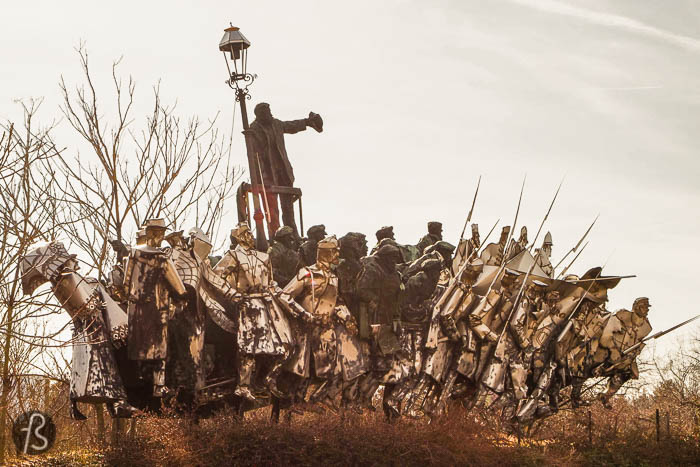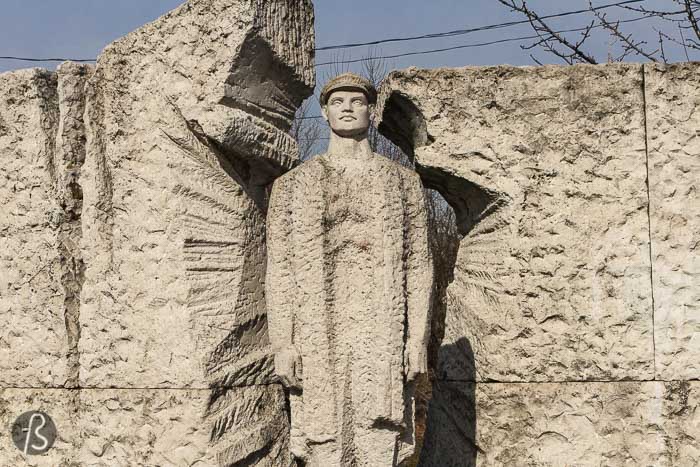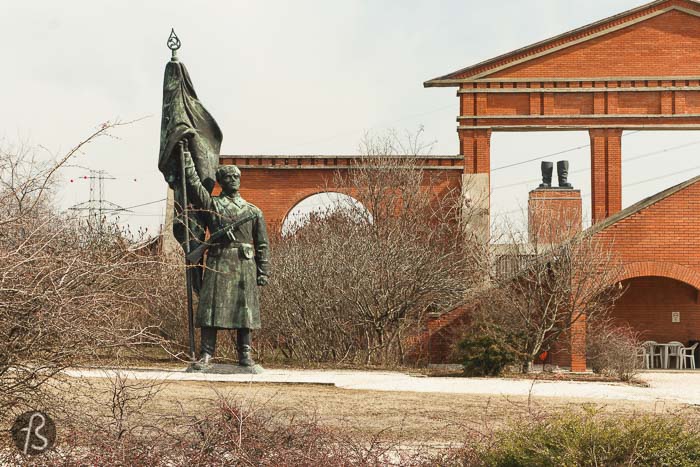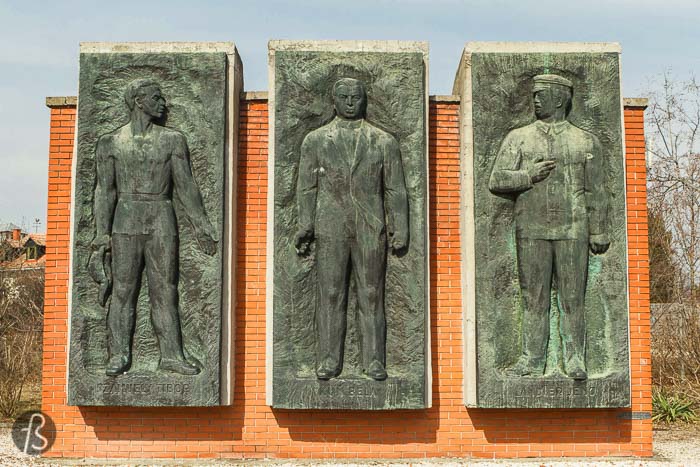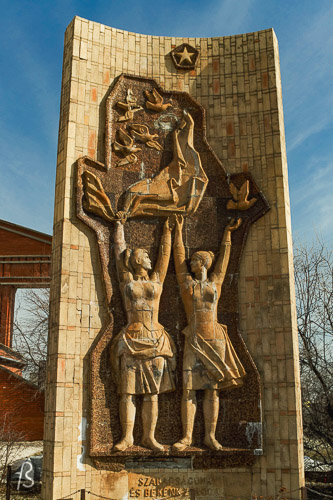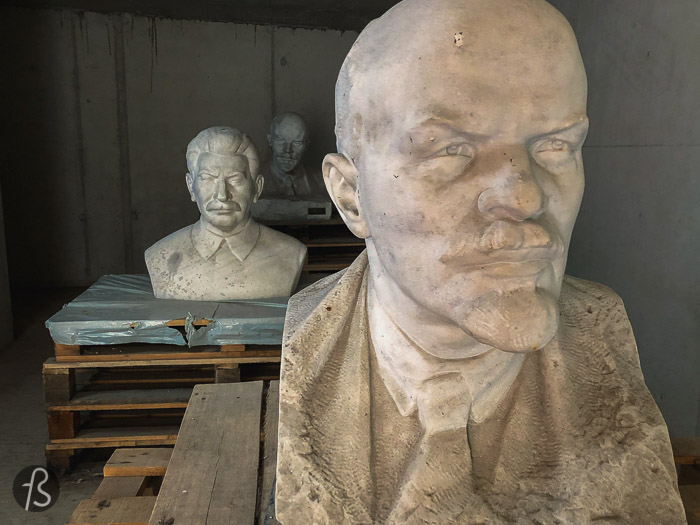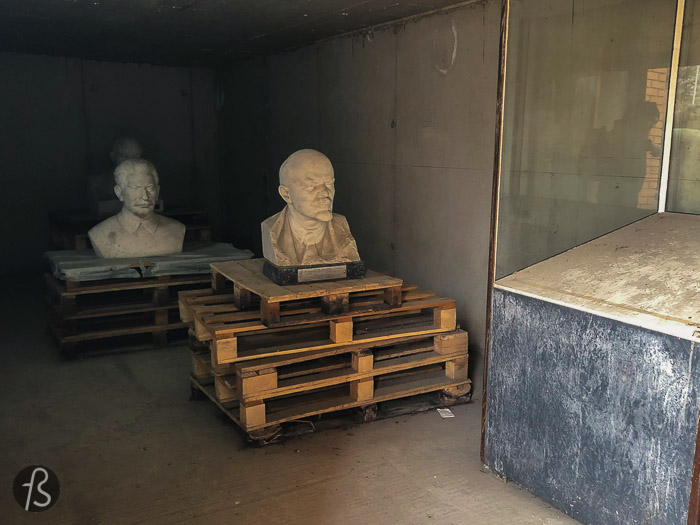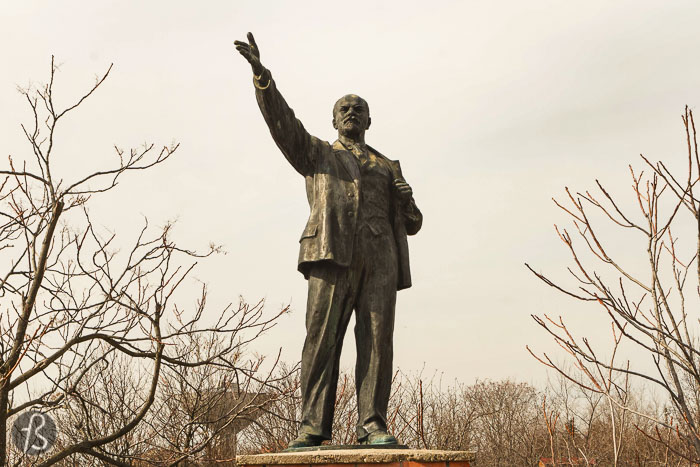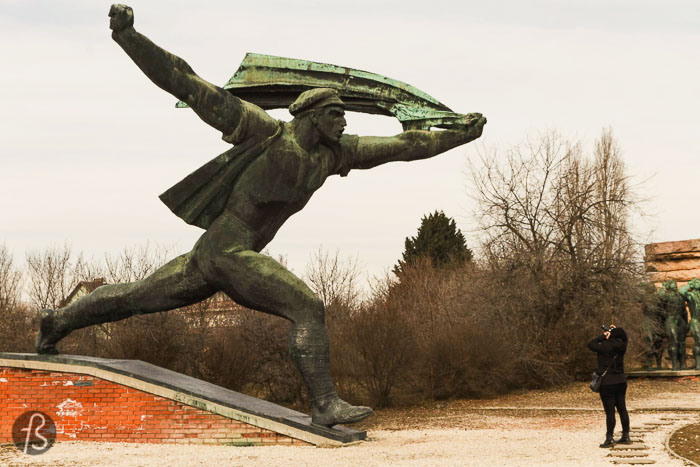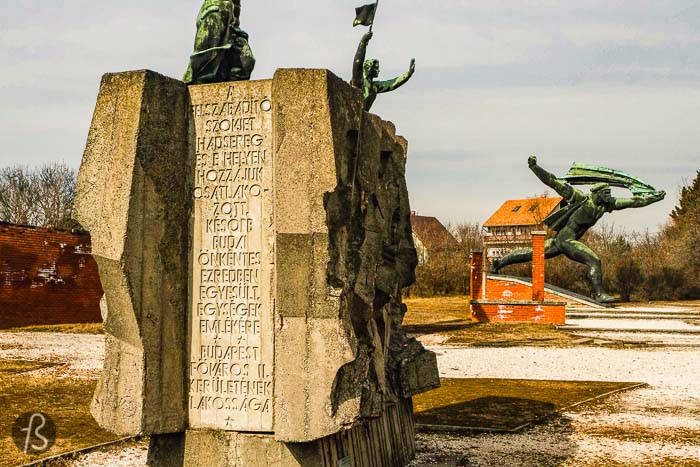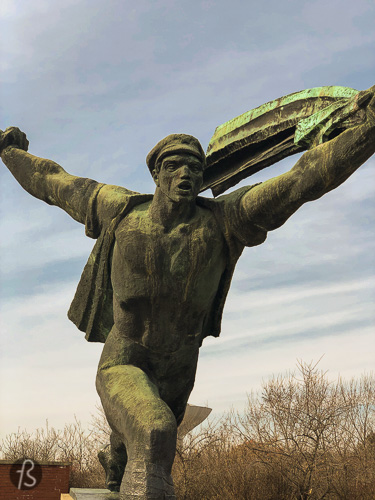Located in the hilly south of Budapest, Memento Park seems to be the place that communist statues go to die. There, Lenin stands next to Karl Marx and Engels, together with crucial Hungarian communist leaders. All of this behind brick walls that make up a surreal and unique open-air museum that feels more authentic than most sights in the city.
When the Iron Curtain came down in 1989, most of the reminders of the communist dictatorship that took over Hungary were ripped out of Budapest. In 1991, Memento Park came to be as a place where these statues could be exhibited as a reminder of what happened before. Rather than destruction, these statues were saved, and now they lay in a neutral setting.
Memento Park was on our site since we started researching things to do in Budapest. It felt like a place we needed to visit since we already have seen something similar in Tallinn. Also, since we are on a constant hunt for Lenin statues, this open-air museum seemed to be the perfect place to spend some time taking pictures.
On a cold morning in February, we left the Maverick City Lodge after breakfast, and we took a tram to the outskirts of Budapest. From there, we needed to take a bus, and after almost 30 minutes, we found ourselves in the middle of nowhere. Surrounded by empty fields and parking lots. For a brief moment, we thought we were in the wrong place, but we saw some statues in the distance, and we knew we were in the right place.
A little bit of Budapest’s Memento Park history
Budapest’s Memento Park, also known in Hungarian as Szoborpark, is an open-air museum and park in the outskirts of the city. There, you’ll find sculpted plaques and monumental statues from the fifty years where Hungary was a communist country. Lenin, Stalin, Marx, and Engels statues can be seen there. As well as several Hungarian communist leaders and revolutionaries like Béla Kun, Tibor Szamuely and Róbert Kreutz, who was active in the resistance movement against Nazism in World War II.
The park was designed by Ákos Eleőd, after winning a competition started by the Budapest General Assembly back in 1991. According to him, the park is about dictatorship. But, at the same time, he feels like this park is about democracy. After all, only in a democratic state is there an opportunity to share thoughts and images about a dictatorship like the one that took over Hungary for 50 years.
Budapest’s Memento Park opened to the public on the 29th of June, 1993. An important day in Hungary since it was the second anniversary of the withdrawn of the Soviet troops from the country’s territory.
There are two different sections at Budapest’s Memento Park. The first one you see when you arrive there is called Witness Square and lies east of the main entrance, and you don’t need to pay to see everything there. The main sight there is the life-sized copy of Stalin’s Monument Tribune. There are some bronze boots on top of it, and they seem to be the most unique item on display there.
These boots are a way of remembering those who fought on the 23rd of October 1956, when Hungarians revolted against the communist regime and took down the huge Stalin statue that used to stand at Felvonulási tér, in Central Budapest.
Inside the tribune, you can see some marble statues of Lenin and Stalin. Outside there is a small movie theater showing a documentary on the methods used by the secret police during the dictatorship. We didn’t watch it because the exhibition hall where it was shown was closed when we visited the park.
Memento Park main section is known as the Statue Park but is officially named A Sentence About Tyranny after a poem from Gyula Ilyés. This section is laid out in 6 oval sections where you can see 42 statues and monuments that were removed from Budapest after the fall of communism.
It’s interesting to us that some of the statues that were removed from the city are not necessarily related to the communist dictatorship but the resistance against Nazi Germany in the Second World War. Also, some of the statues are from the people responsible for the Hungarian Soviet Republic that happened after the end of the First World War.
For us, this park was a pretty exciting place. We loved taking pictures of the historical communist statues, and we learned a lot about the recent history of Hungary and what happened in the country between the two World Wars. If you like this aspect of history, this park was made for you.
Budapest’s Memento Park is open every day from 10 in the morning to sunset, and you can reach it by public transportation. Two buses leave Kelenföld vasútállomás and would drop you at Budatétény vasútállomás/Memento park. These are buses 101 and 150. Take a look at the map below to make it easier for you to arrive there.
Every year, 40.000 people visit Memento Park. When we were there, a couple of people were walking around and taking pictures, but the place felt empty. Maybe it’s different in the summertime since the city is way more crowded. The park belongs to the Hungarian government, but it’s operated as a private venture that is supported by tickets and the souvenir shop. This means that, if you liked what you saw there, buy a book or something else and help keep this place open.
Budapest’s Memento Park: Where Communist Statues go to die
15 Szabadkai u. – Budapest, 1223
Hungary
www.mementopark.hu
<!– Go to www.addthis.com/dashboard to customize your tools –><br /><br /><!– –><div class="addthis_recommended_horizontal"></div>
